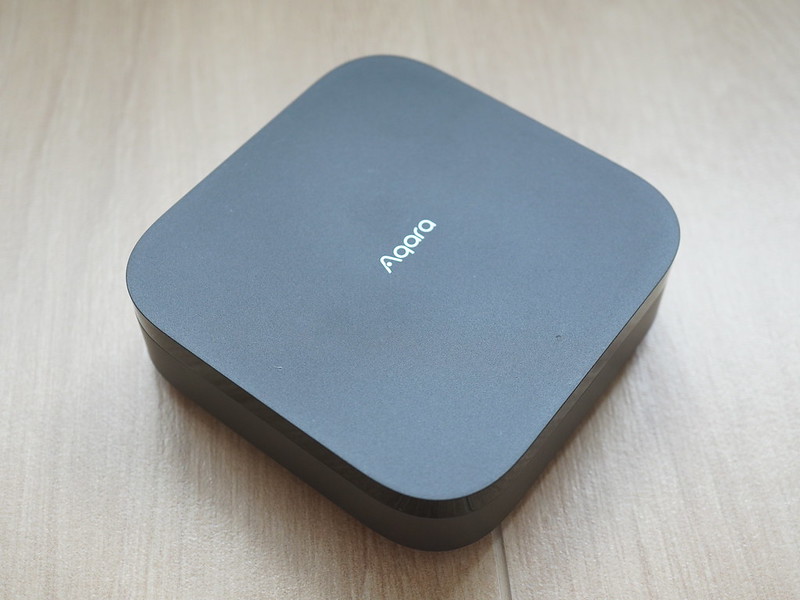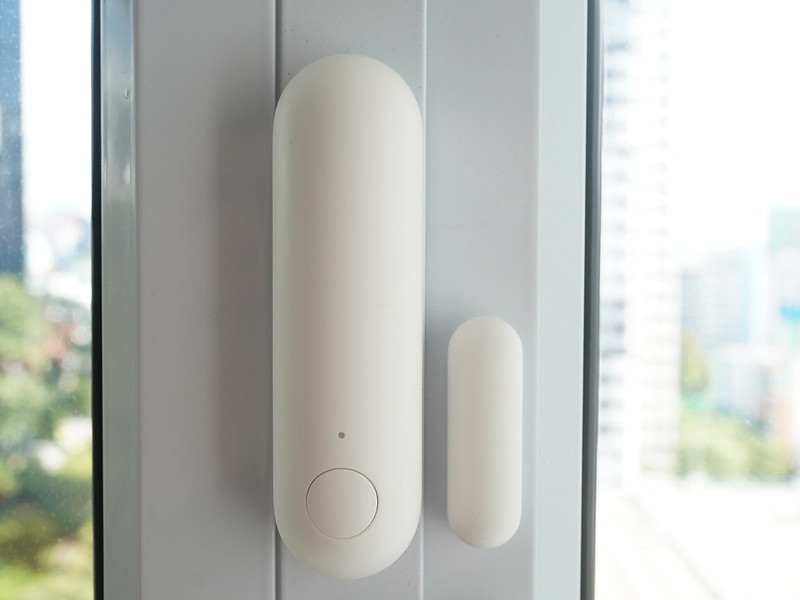Aqara Hub M3 Review
Aqara Hub M3 was officially launched in Singapore on 8th May 2024 for S$209. You can get the Aqara Hub M3 from Souky’s Store on Shopee or Lazada.
It is the direct successor of the Aqara Hub M2, which I am using currently.
Two significant features of the M3 Hub are that it is a Matter Controller and a Thread Border Router.
Matter Controllers allow you to add 3rd party Matter devices to the M3 Hub. The support is minimal now as only selected Philips Hue lights, Leviton switches, and Google Nest thermostats are supported.
Thread Border Router connects a Thread network to your IP-based network such as Ethernet or Wi-Fi.

Although Matter and Thread are often mentioned together, they are different. In layman’s terms, Thread refers to the mode of communication, while Matter is the language in which they communicate. That is why you can have Matter over Thread, Ethernet, and Wi-Fi.
Some other minor enhancements to the M3 Hub include wall-mounting, PoE, dual-band Wi-Fi (2.4/5 GHz), Bluetooth 5.1, a louder speaker, and bi-directional 360° Infrared (IR).
Even though the M2 Hub has Bluetooth Low Energy (LE), you cannot use it as it is being disabled by software. The M3 Hub has Bluetooth 5.1, so you can connect to future Bluetooth accessories. Currently, the primary use case is pairing devices with the M3 Hub. Aqara calls that MagicPair technology.
360° IR is not new, as it can also be found in the M2 Hub. However, M3 Hub makes it bi-directional. That means the IR in the M3 Hub allows for learning IR commands and detecting physical remote use for status updates.
Unboxing



Since the M3 Hub supports wall mounting, it comes with wall-mounting brackets and mounting screws.

Design
Aqara opted for a squarish shape with the M3 Hub, which reminded me of the Apple TV design.

Generally, the build is slightly bigger and feels more solid than the M2 Hub.

You can power the M3 Hub by PoE or the USB-C port. Since I don’t have PoE, I use USB-C. Even though the M3 Hub supports dual-band Wi-Fi, I still recommend using Ethernet for better reliability.

Similar to the M2 Hub, only one button on the M3 Hub is located at the back. It is used for resetting the hub.

Installing
MagicPair works as advertised. After opening my Aqara Home app, it detected my M3 Hub correctly.

Next, I was prompted to scan the QR code at the back of the M3 Hub to connect to it.

Lastly, there are two ways to connect your M3 Hub to your smart home system. One is via Matter, and the other is Apple HomeKit. I chose Apple HomeKit to connect to my Apple HomeKit and Matter to connect it to my Google Home.

Technically, you can also connect to Apple HomeKit via Matter. But I chose not to do it to avoid confusion. If you connect both via Apple HomeKit and Matter, you will end up with duplicated devices in the Apple Home app. So pick one and stick with it.

For me, as long as Apple HomeKit is supported directly, I will use it instead of Matter.


Using It
The UI for the M3 Hub device page in the Aqara Home app is slightly nicer and more modern.

I am trying to figure out how to validate the Hub Cluster functionality with my current M2, but I couldn’t. So, I can only trust it is working.
This is what Aqara wrote in their FAQ:
After connecting to your existing Aqara setup, the Aqara Hub M3 forms a hub cluster, and becomes and takes the lead over other Aqara Zigbee hubs aiming to improve the smart home experience. It converts the automations that involve multiple hubs and child devices connected to them, from Cloud to Edge automations, which are more stable and fast, and coordinates other Aqara Zigbee hubs.

From what I read in the early reviews, the air conditioning mode is still buggy. If you are like me, expose the M3 Hub via Apple HomeKit and not Matter in the Apple Home app, it will not be detected as a Thermostat. And even if you managed to get it detected as a Thermostat via Matter, the status will not be updated.

I have gone past the stage of trying to figure out how to integrate IR with Apple HomeKit that I went to get Sensibo Air Pro instead. It is still working perfectly since November 2023. I highly recommend using this approach.
Here are the settings page of the M3 Hub.


Thread Network
If you have existing devices like Apple TV, Apple HomePods, Google Nest Hub (2nd Gen), or eero, they already are a Thread Border Router on their own. Apple devices will form its Thread network, Google will form its Thread network, and so will eero.
Each Thread network is standalone and can’t be joined to form a single Thread network. This feature is in the works according to this article on Matter Review, Thread Border Router Crash Course: Everything You Need to Know. This feature, Credential Sharing, will be available in Thread 1.4.0.
Based on my Home Assistant’s Thread settings, if there is an existing Apple Thread network, the M3 Hub will join it. As you can see from the screenshot below, I have four Thread Border Routers in the MyHome27 Thread network.

Some sites refer to Apple’s Thread network as the HomeKit Thread Network. It doesn’t have an official name, but I guess you can use it interchangeably.
Migration
You can do it under Hub Migration to replace your M2 Hub with M3 Hub. Although almost no data will be lost on the Aqara side, you will still need to reconfigure those devices (including automation and moving them to the correct room) in the Apple Home app again since the Hub has been changed.

Because of that, I chose not to migrate. I will run both the M2 and M3 Hub concurrently, and I will only add new devices to the M3 Hub.
Should You Get The Aqara Hub M3?
Let’s start with if you are a new user of Aqara and wish to join the Aqara ecosystem. The answer is yes. It would be best to get the M3 Hub instead of the M2 Hub because that is future-proof. I am pretty sure the M2 Hub will now only receive bug fixes and no new features from now on.

How about if you are an existing M2 Hub user? The answer depends on whether you will likely buy any “Built On Thread” devices like the Aqara P2 Door & Window Sensor or the Aqara P2 Motion & Light Sensor.
If the answer is yes (like me), you have no choice but to get the M3 Hub, as that is the only Hub that can configure the settings of those devices. I said configure because even without the M3 Hub, as long as you have a Thread Border Router like Apple TV or Apple HomePods, you can add it to Apple HomeKit. You just cannot configure the settings.
If you are not interested in Thread devices and intend to stick to ZigBee devices, I don’t see any reason for you to upgrade to the M3 Hub.
Should You Migrate To The Aqara Hub M3?
If the answer is yes to the previous question, the next question is whether you should migrate all your child’s devices from the M2 Hub to the M3 Hub.
Migrating devices from M2 Hub to M3 Hub is troublesome on the Apple HomeKit side, as you need to reconfigure all devices again. I don’t see any benefit, especially if the M2 Hub has been very stable for you.
Hence, my take is that you should not. Especially if the M2 Hub has been working perfectly for you all this while.
Instead, run it concurrently and only add new devices (even if it is a Zigbee device) to the M3 Hub. That is what I will be doing.



